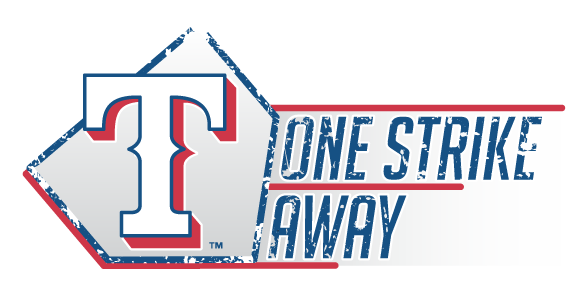Quick Analysis of Calvin Watkins's Top-10 Rangers Prospects
/Heading into 2015, the Rangers -- along with teams like Houston, Chicago (NL) and Boston -- carry one of the deepest farm systems in baseball. Headlined by names like Joey Gallo, Jorge Alfaro and Nomar Mazara at the top, Texas are flush mostly in position players and relief pitcher prospects, with the occasional #3 starter here and there.
Calvin Watkins has a nice little feature this offseason, ranking his top-10 Rangers prospects with some quotes here and there from various scouting services. It's a crude list to be sure, but at least Watkins is trying.
Anyway, here are his top eight, in descending order:
10. Corey Knebel
9. Travis Demeritte
8. Lewis Brinson
7. Nomar Mazara
6. Jake Thompson
5. Chi-Chi Gonzalez
4. Nick Williams
3. Luke Jackson
That I am no rocket scientist notwithstanding, I'm going to step out on a limb and guess Jorge Alfaro is #2 and Joey Gallo will be #1. Please forgive my presumptive nature. On the whole it isn't a terrible list, which is really to say a lot of names are there that we know, albeit completely misplaced.
Joey Gallo and Jorge Alfaro, in either order, deserve to be the top-2 players in the system. Neither are without quite a bit of risk, but even fulfilling basement-level promise they each figure to be in the major leagues for a while. If they turn out to realize their potential, both are All Star-caliber regulars.
Only 19, Nomar Mazara had a breakthrough 2014 campaign, hitting .264/.358/.470 (130 wRC+) with 19 HRs in Low-A before jumping High-A altogether. He ended his season mashing Double-A pitching to the tune of a .306/.381/.518 (157 wRC+) triple slash line in spite of being the youngest player in the Texas League. It was only about 100 plate appearances, so it's nothing to completely freak out over, but Mazara should find himself as a consensus top-3 prospect in the organization heading into 2015.
Luke Jackson and Nick Williams are jokes being ranked 3rd and 4th, respectively. Jackson, a hard-throwing right-hander with shaky control and average secondary offerings, will likely end up in the bullpen at some point, severely hindering his future value. Williams is a bit more of a conundrum, because he's always had the physical tools, but there's a good chance his true talent level will never actualize due to his excessively bad approach at the plate. In about 1,200 career minor league plate appearances he holds a K/UIBB ratio of 232/54; as the pitching grows more advanced at the upper levels, his reckoning will be swift unless he drastically alters his ability to get on base.
Looking at this through the lens of WAR -- something I am wont to do -- it's difficult not to have RHPs Chi-Chi Gonzalez and Jake Thompson ranked squarely behind the top-3, if not higher depending on the beholder. Number three starters don't exactly grow on trees, even though that's not sexy to hear, and if that's all either of these two pitchers turn into that will provide supreme value to the Rangers heading into the next half-decade. Thompson, whom the Rangers acquired along with Knebel from the Tigers in the Joakim Soria trade, has the upside to be better than that, while Gonzalez is your prototypical example of a low-ceiling/high-floor rotation stabilizer. Remember, pitching is still the end-all in baseball.
Lewis Brinson is my favorite prospect on this list, because he's yet to gain a ton of notoriety among the casual observer. He's known as an exceptional defensive center fielder -- so he's going to have a job in the big leagues as a 4th outfielder if worst comes to worst -- but also provides prodigious power potential. Center field is a lot like catching and playing middle infield in that defense is the priority; if a guy can hit on top of that, his value skyrockets. Brinson is someone I've followed closely since he was drafted, and I look forward to a breakout 2015 season.
Not listed are guys like Ryan Cordell, Keone Kela, Andrew Faulkner, Alec Asher, Doobie Herrera, Pat Cantwell, Michael De Leon and a slew of others at various stages of development with a chance of reaching the majors down the road. The Rangers are pretty loaded.
Of course, we can't forget that the goal is not to have all these players on the Rangers one day; that's not really the point. The purpose of every farm system is merely to better the big league roster by one means or another. If they make it, that's great. But some -- or many -- of these guys will be used as trade chips to net Texas major league talent from other organizations.
